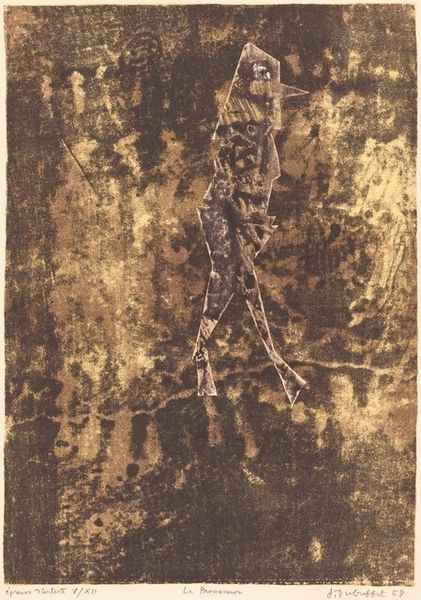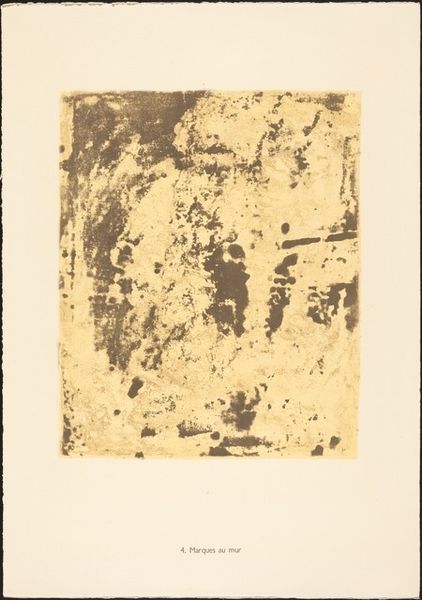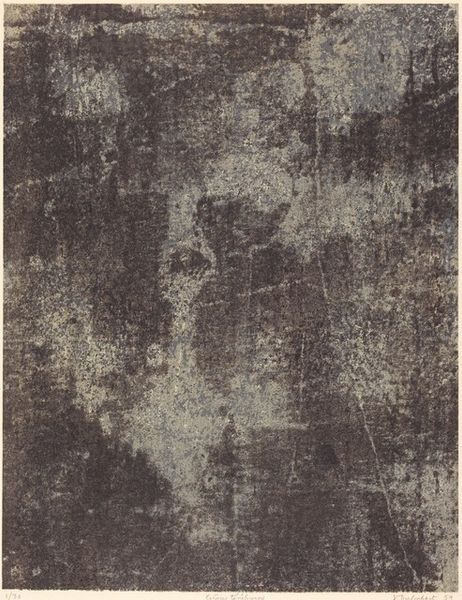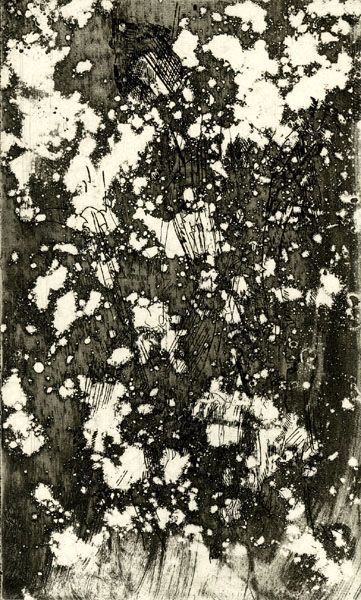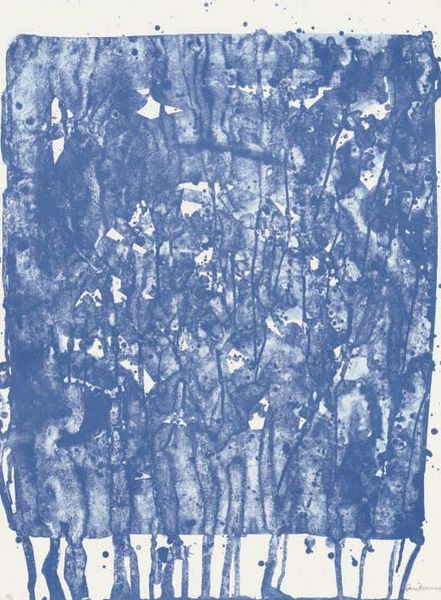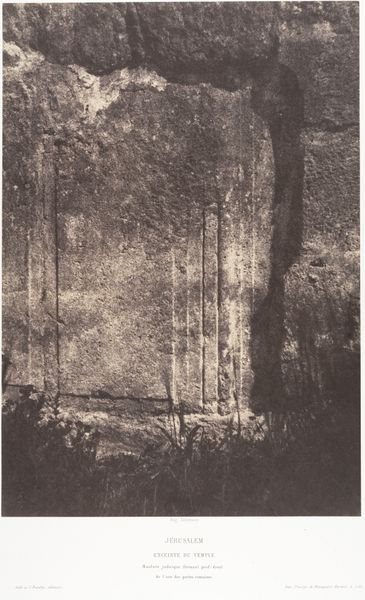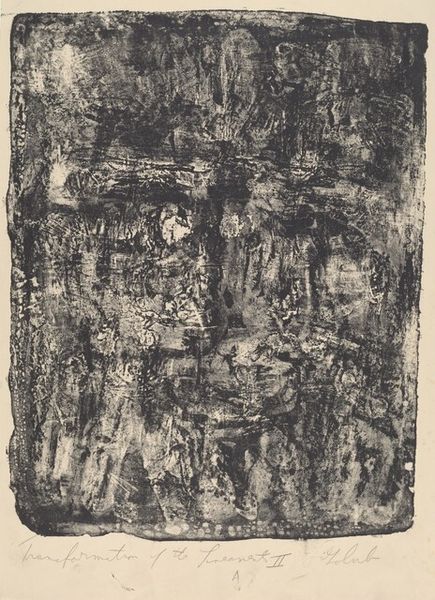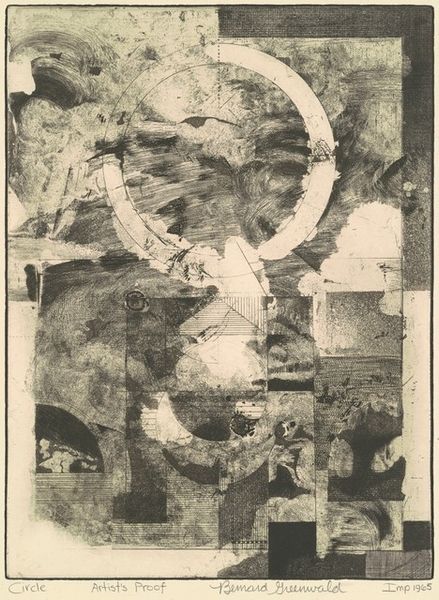
#
abstract-expressionism
#
abstract expressionism
#
organic
# print
#
organic pattern
#
monochrome
Copyright: National Gallery of Art: CC0 1.0
Editor: So, this is Jean Dubuffet’s "Dispositif au sol," created in 1958. It’s a print, a monochromatic sort of piece. There's a raw, almost earthy feel to it. What do you make of it? Curator: Well, immediately, I’m drawn to the materiality of the piece. Look at how Dubuffet utilizes printmaking, traditionally seen as a medium for reproduction, to create something so palpably unique. How do you think the 'earthy feel' you mentioned is achieved through process? Editor: I guess it’s the texture. You can almost feel the grit and roughness of… something. It's not smooth or refined like some prints. Curator: Exactly. Consider this within the context of post-war art. There's a breakdown of traditional artistic boundaries, a move towards raw expression, but the materiality here takes center stage. Dubuffet is forcing us to consider what printmaking can be beyond mere replication. Do you see any implications in terms of labor and production? Editor: Hmmm... maybe the apparent ease of printmaking is subverted? It looks so chaotic, almost violently applied, not easily produced. It doesn't look like mass production, it feels closer to craft. Curator: Precisely! He challenges the hierarchy that placed painting and sculpture above craft. Dubuffet is actively reclaiming value for those 'lesser' forms of artistic labor. The question now is how that material perspective informs what the viewer sees and what value system it reinforces. Editor: That's a totally new perspective for me, thanks! It changes the way I see the artist’s involvement, not just the aesthetic. Curator: And hopefully opens avenues for analyzing other works with an emphasis on their own conditions of production and reception.
Comments
No comments
Be the first to comment and join the conversation on the ultimate creative platform.
